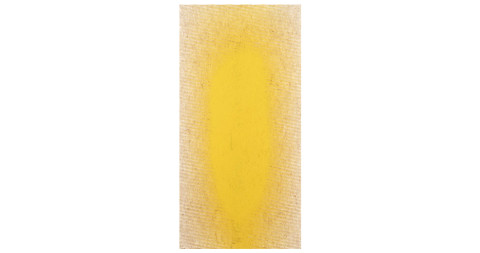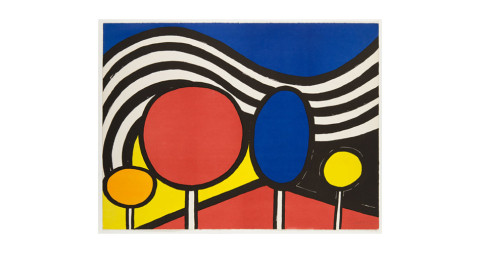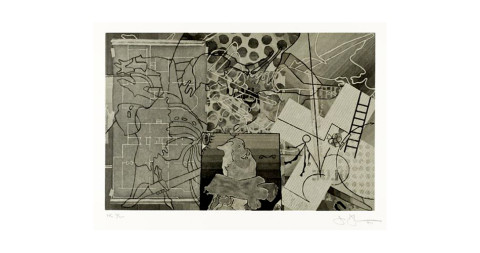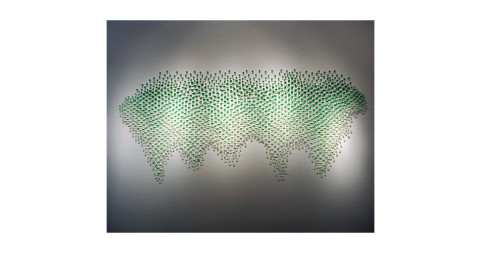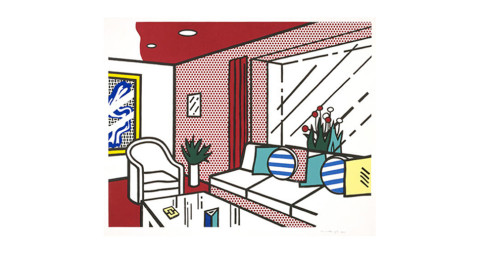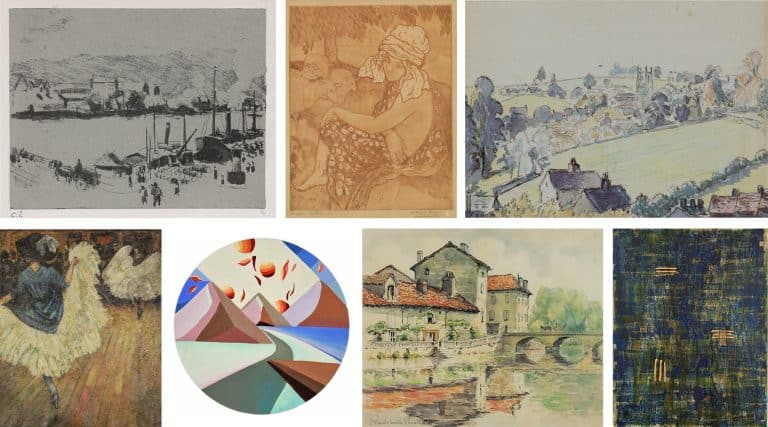Wendy Cromwell founded her own art advisory firm in 2002, after spending 10 years in the contemporary art department at Sotheby’s New York. She is now vice president of the nonprofit Association of Professional Art Advisors (APAA), helping private clients assemble contemporary art collections, whether from scratch or by bringing an existing collection to the next level. She spoke with Introspective about her approach to collection building and her top picks on 1stdibs.

March 6, 2013Among the works Wendy Cromwell has purchased for clients in her capacity as an art advisor is Dan Colen’s S&M, 2010. Portraits by Barry Sutton
You studied at Smith, which has a wonderful college art museum. Did your access to that collection affect your own approach to collecting?
It was a big influence. Smith’s founders, in the 1890s, thought that contemporary art should be part of everyone’s education, and they started the museum to collect contemporary art. So I really learned to think about everything — even a 19th-century William Merritt Chase painting — as it would have been perceived when it was contemporary. It really helped me to think about why, and if, new art will last.
How do you determine if work by an up-and-coming artist has staying power?
One thing I look for is how artists either engage the dialogue of the past in a new way or push that dialogue forward in a very radical way.
What are some of the more important lessons you took away from your time at Sotheby’s?
I learned about price-quality ratios in a very concrete way. For example, I’d advise a client with a particular budget looking for a specific artist to buy the best work of art on paper by that artist rather than a mediocre painting, if it costs the same amount of money. Quality will always retain value and usually increase in value over time regardless of the medium.
I also learned that great collectors are not afraid to overpay for a great work of art, because they know what they’re doing, and they know the market will eventually catch up to them. They’re also not afraid to buy in a down market. They know that things go down and things go up but great, great things follow this “Steady Eddie” trajectory.

Cromwell in a client’s home in front of Aaron Young’s Lindsay as Marilyn, 2012.
How did you approach the 2007–2008 economic downturn?
I started at Sotheby’s in the 1990s, during that collapse, so in the late 2000s I had the confidence to say to collectors that this is the best time, we should be looking for this and this and this. Pieces that clients bought in that two-year period — they couldn’t touch those same acquisitions now.
How do you advise collectors who are priced out of the top or even middle of the art market?
If they are open to works on paper, it opens things up. And if they are open to buying sculpture, there are wonderful things that can be done even at the top end of the market. I really think sculpture has always been a value play, and the great collectors know that. Going down to a younger generation of artists also helps to take the edge off in terms of budget. Good collectors aren’t stagnant. They are constantly interested in the next generation coming up. I put clients into art early — not emerging art necessarily, but maybe I’ll help a collector buy something before an artist’s first show at a major gallery.

Cromwell has rounded out a client’s collection with Jeff Koons’s stainless-steel Inflatable Flowers Sculpture (Blue), 2000.
How do you help collectors strike a balance between buying for investment and buying for love?
Most of my clients are smart investors and buy art because they love it and it’s a very enjoyable way to connect with a community that’s creative and outside their profession. It’s a nice perk of owning art if it has liquidity, and they know I am providing good advice about value. Nobody wants to spend his or her money stupidly. But investment value is not a primary concern. Working with clients who are only interested in art for financial reasons would hurt me as a professional, since it implies that they will sell the art to realize profits at some point.
Those opportunistic collectors are disdainfully referred to within the art world as “flippers.”
Good galleries wish to avoid at all cost collectors flipping the art they have purchased. That’s one of the reasons dealers are selective about who they’ll sell to — and it’s why new or inexperienced collectors can benefit from working with a reputable art advisor, who is trusted by the dealer community.
What would be your dream collection?
I’m really drawn to master works on paper. I’ve always loved these big sheets of paper: Twombly’s “Roman Notes” or Brice Marden’s ink works, a great Lichtenstein or Ruscha. On canvas you sometimes see brushwork, depending on the artist, but more often than not you don’t, and I love the artist’s hand, the intimacy of the sheet of paper, the texture — and I love the value. It would be extraordinary to put together a master drawing collection focusing on Western art from the Renaissance to the present with choice small-scale examples of paintings from certain key areas.

